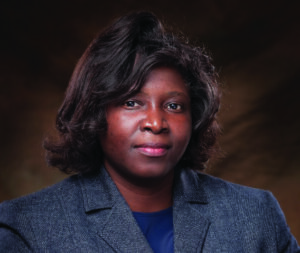By Miriam F. Williams, Editor

This past May, I had the pleasure of attending the 2022 STC Summit in Chicago with the theme, “The Booming Business of Content: A New Era, New Opportunities.” Like many of you, I left the event rejuvenated. After months of not traveling or attending face-to-face conferences, it was a pleasure to meet and greet so many colleagues from across industries and from around world. It was exciting to attend presentations where so many shared innovative ideas about content, including emerging trends and technologies. In reading this issue of Technical Communication, I could not help but notice that many of the presentations at the Summit were related to the topics in this issue of the journal. This issue includes research on new types of content to consider, new guidelines for instructional videos, a new model for extended reality, new social justice projects, and a new way to map the trajectory of the field.
I also noticed that the authors in this issue of Technical Communication continued, expanded upon, and updated their previous research as well as identified novel applications for established frameworks. This idea of continuation, returning to what we know to be useful, improving upon it, adding to it, correcting it, and implementing it anew, is not new in technical communication. The work of revising our own work or continuing the work of others are tools of our trade, which are very much evident in the excellent articles in this issue.
The first article in this issue is “Eleven Guidelines for the Design of Instructional Videos for Software Training,” by Hans van der Meij and Constanze Hopfner. Appropriate for our new era of content, this study expands on guidelines previously proposed by van der Meij and van der Meij (2013). Hans van der Meij and Constanze Hopfner provide the Technical Communication audience with “novel guidelines about how to design the procedural discourse, video reviews, and background music” and provide “design advice on narrator presence on-screen and its effect on learning is provided.”
In the second article in this issue, Satu Rantakokko continues research from the May 2022 issue of Technical Communication on extended reality. In the May issue, Satu Rantakokko shared “Data Handling Process in Extended Reality (XR) When Delivering Technical Instructions.” In this issue, the author builds upon that research with a new model in “Creating a Model for Developing and Evaluating Technical Instructions that use Extended Reality.” To introduce this the new model, the author explains, “The TIER model is introduced with examples to illustrate how it can be used to view every phase of XR data handling in terms of the affordances of technical instructions based on the laws, regulations, principles of good guidance, and the design process.”
In the third article, “Countering Dominant Narratives in Public Memory,” April O’Brien and Josephine Walwema continue O’Brien’s research on historical marker texts (HMT) and Walwema’s research on the ethics and tactical technical communication to explore efforts of the Equal Justice Initiative (EJI). The authors explain, “To do this work, we (1) establish HMTs as TPC public-facing informational reports that communicate historical knowledge (Haas, 2012; Markel & Selber, 2018, p. 449; O’Brien, 2021); (2) examine how county and state historical commissions actively impede attempts to erect HMTs that communicate the impact and significance of Black individuals or provide an accurate account of racialized injustices; (3) adopt the 4Rs heuristic (Walton, Moore, & Jones; 2019) as a coalitional, truth-telling tactic to redress inequalities in public memory; and (4) bring together EJI’s uses of the 4Rs and tactical technical communication to memorialize the lives of the victims of terror lynching.”
In the fourth article, “World-Traveling to Redesign a Map for Migrant Women: Humanitarian Technical Communication in Praxis,” Gabriel Lorenzo Aguilar uses Maria Lugones’ practice of world-traveling to redesign maps for migrant women. In this article, the author explains, “World-traveling is the practice of seeing through another’s eyes to anticipate what they may need (Lugones, 2003). It calls us to travel from our privileged “worlds,” spaces we inhabit as scholars, into the worlds of vulnerable populations. The practice helps researchers understand the worlds of marginalized populations and help them. I world-travel to migrant women in an archive to improve a map that migrants use to find water in the Arizona desert.” In this article, the author warns practitioners, scholars, and students about the ethical implications of misusing this practice as well as the benefits if used, justly.
Finally, in “Mapping the Evolutionary Characteristics of Global Research Related to Technical Communication: A Scientometric Review” by Mingdan Luo, Dorothy DeWitt, and Norlidah Alias, the authors use visualization software to map the field’s research over the past twenty years. The authors state, “Visualization software was employed to analyze co-citation and co-word networks from 2,183 articles published in Web of Science and Scopus databases from 2001 to 2020.” This article can help managers and technical communicators identify trends, help students identify potential career paths, and help researchers identify conversations to expand on and continue.

